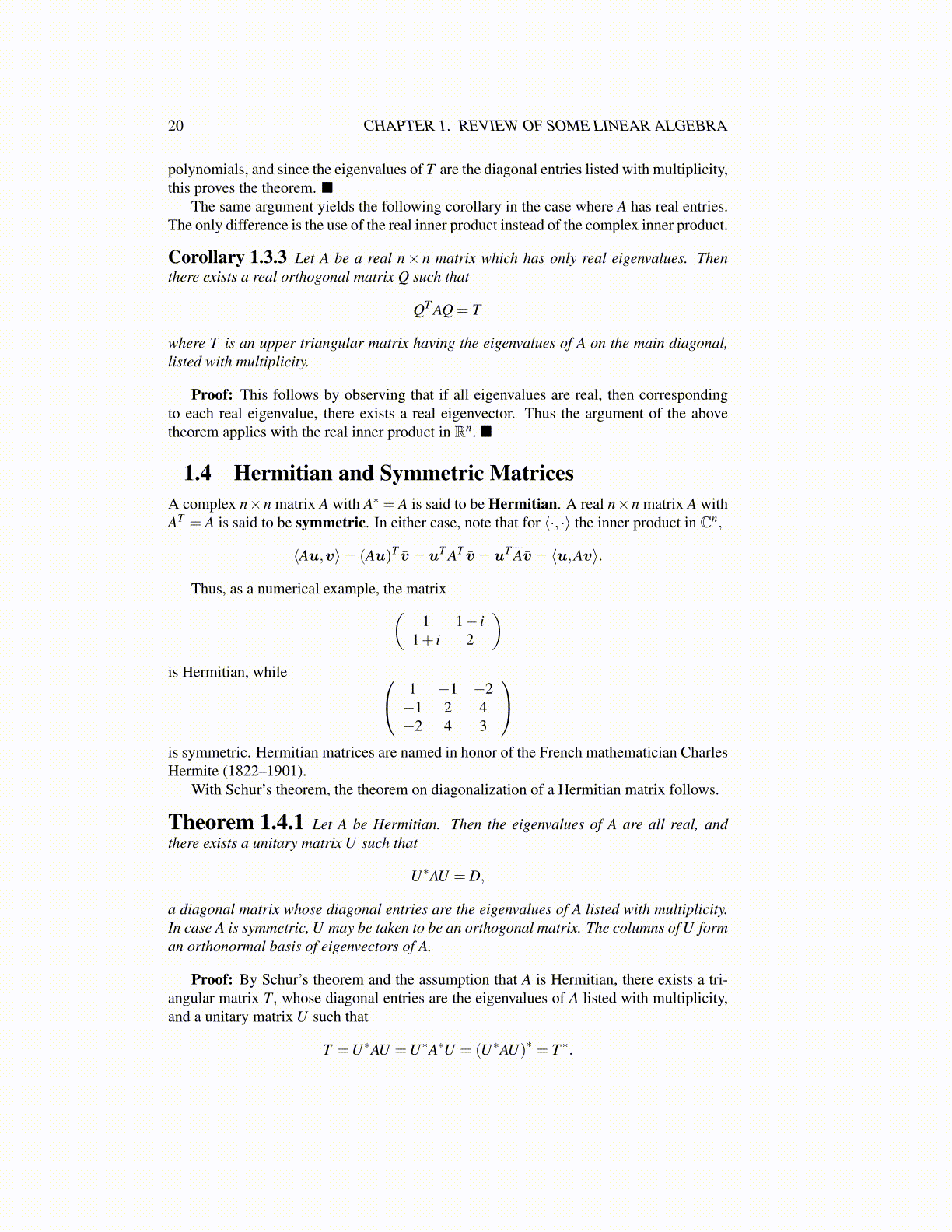
20 CHAPTER 1. REVIEW OF SOME LINEAR ALGEBRA
polynomials, and since the eigenvalues of T are the diagonal entries listed with multiplicity,this proves the theorem. ■
The same argument yields the following corollary in the case where A has real entries.The only difference is the use of the real inner product instead of the complex inner product.
Corollary 1.3.3 Let A be a real n× n matrix which has only real eigenvalues. Thenthere exists a real orthogonal matrix Q such that
QT AQ = T
where T is an upper triangular matrix having the eigenvalues of A on the main diagonal,listed with multiplicity.
Proof: This follows by observing that if all eigenvalues are real, then correspondingto each real eigenvalue, there exists a real eigenvector. Thus the argument of the abovetheorem applies with the real inner product in Rn. ■
1.4 Hermitian and Symmetric MatricesA complex n×n matrix A with A∗ = A is said to be Hermitian. A real n×n matrix A withAT = A is said to be symmetric. In either case, note that for ⟨·, ·⟩ the inner product in Cn,
⟨Au,v⟩= (Au)T v̄ = uT AT v̄ = uT Av̄ = ⟨u,Av⟩.
Thus, as a numerical example, the matrix(1 1− i
1+ i 2
)is Hermitian, while 1 −1 −2
−1 2 4−2 4 3
is symmetric. Hermitian matrices are named in honor of the French mathematician CharlesHermite (1822–1901).
With Schur’s theorem, the theorem on diagonalization of a Hermitian matrix follows.
Theorem 1.4.1 Let A be Hermitian. Then the eigenvalues of A are all real, andthere exists a unitary matrix U such that
U∗AU = D,
a diagonal matrix whose diagonal entries are the eigenvalues of A listed with multiplicity.In case A is symmetric, U may be taken to be an orthogonal matrix. The columns of U forman orthonormal basis of eigenvectors of A.
Proof: By Schur’s theorem and the assumption that A is Hermitian, there exists a tri-angular matrix T, whose diagonal entries are the eigenvalues of A listed with multiplicity,and a unitary matrix U such that
T =U∗AU =U∗A∗U = (U∗AU)∗ = T ∗.